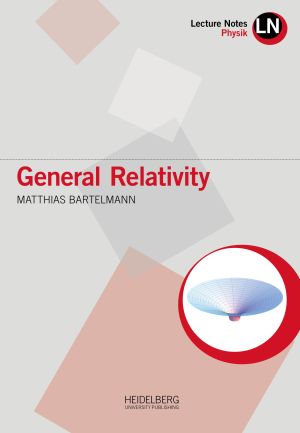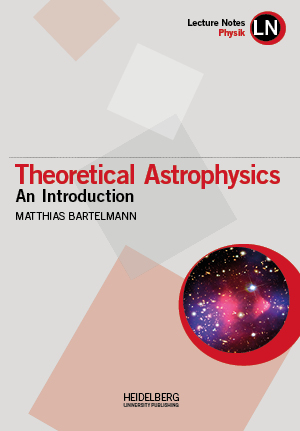Bartelmann, Matthias
General Relativity
Einstein‘s theory of general relativity is still the valid theory of gravity and has been confirmed by numerous tests and measurements. It is built upon simple principles and relates the geometry of space-time to its matter-energy content. These lecture notes begin by introducing the physical principles and by preparing the necessary mathematical tools taken from differential geometry. Beginning with Einstein’s field equations, which are introduced in two different ways in the lecture, the motion of test particles in a gravitational field is then discussed, and it is shown how the properties of weak gravitational fields follow from the field equations. Solutions for compact objects and black holes are derived and discussed as well as cosmological models. Two applications of general relativity to astrophysics conclude the lecture notes.
Theoretical Astrophysics: An Introduction
Understanding astronomical objects requires knowledge and methods from different branches of theoretical physics: we diagnose these objects mostly by the light we receive; the observed phenomena often have to do with the flow of fluids, sometimes ionised, sometimes magnetised; and the measured velocities reflect dynamics driven by gravitational fields. Courses in theoretical physics lay the foundation in classical and quantum mechanics, electrodynamics, and thermodynamics, but a gap remains between this foundation and its application to astrophysics. These lecture notes build upon the core courses in theoretical physics and provides the methods for understanding astrophysics theoretically.





